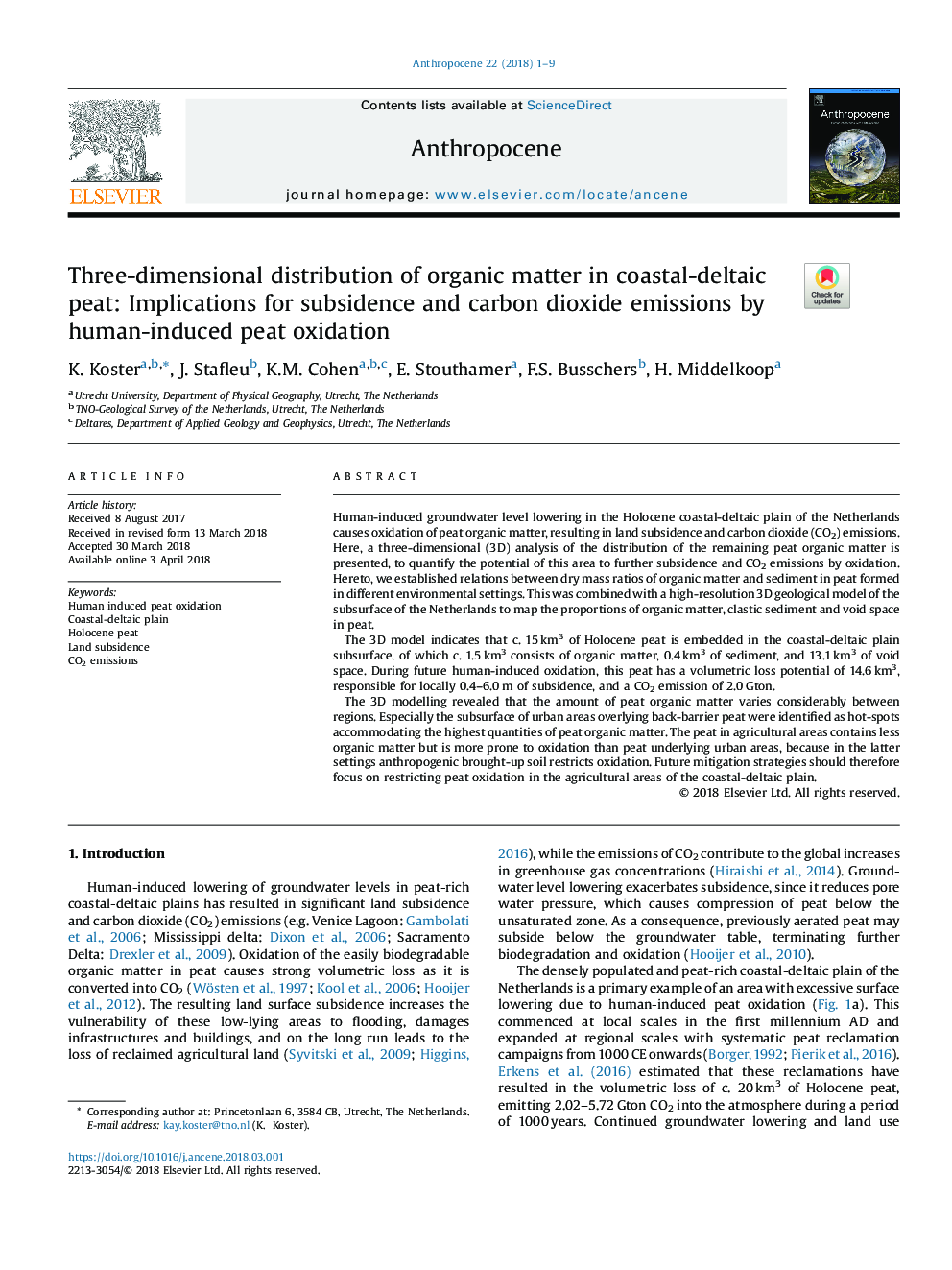| Article ID | Journal | Published Year | Pages | File Type |
|---|---|---|---|---|
| 8867166 | Anthropocene | 2018 | 14 Pages |
Abstract
The 3D modelling revealed that the amount of peat organic matter varies considerably between regions. Especially the subsurface of urban areas overlying back-barrier peat were identified as hot-spots accommodating the highest quantities of peat organic matter. The peat in agricultural areas contains less organic matter but is more prone to oxidation than peat underlying urban areas, because in the latter settings anthropogenic brought-up soil restricts oxidation. Future mitigation strategies should therefore focus on restricting peat oxidation in the agricultural areas of the coastal-deltaic plain.
Keywords
Related Topics
Physical Sciences and Engineering
Earth and Planetary Sciences
Atmospheric Science
Authors
K. Koster, J. Stafleu, K.M. Cohen, E. Stouthamer, F.S. Busschers, H. Middelkoop,
